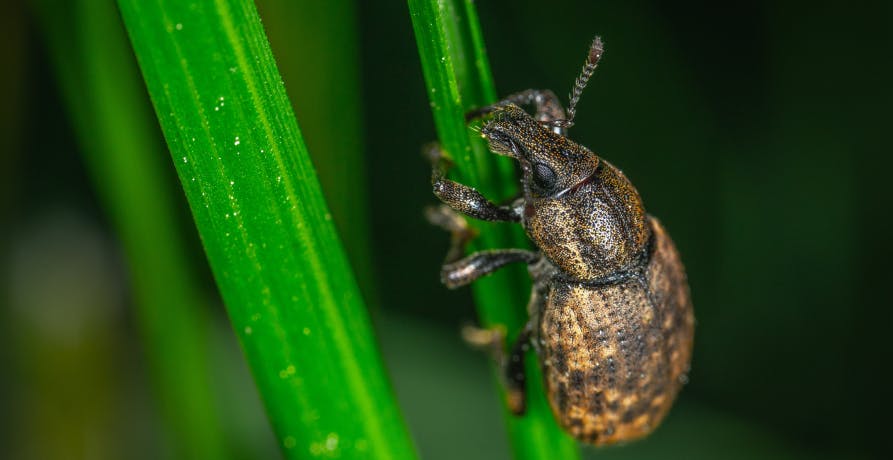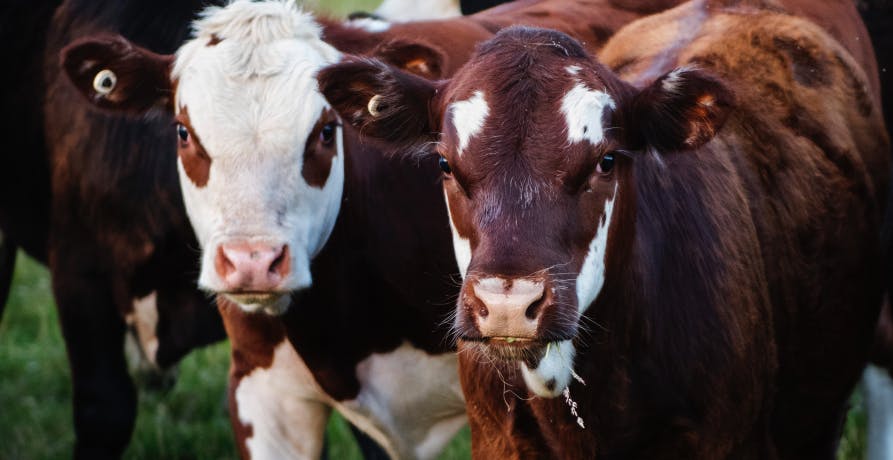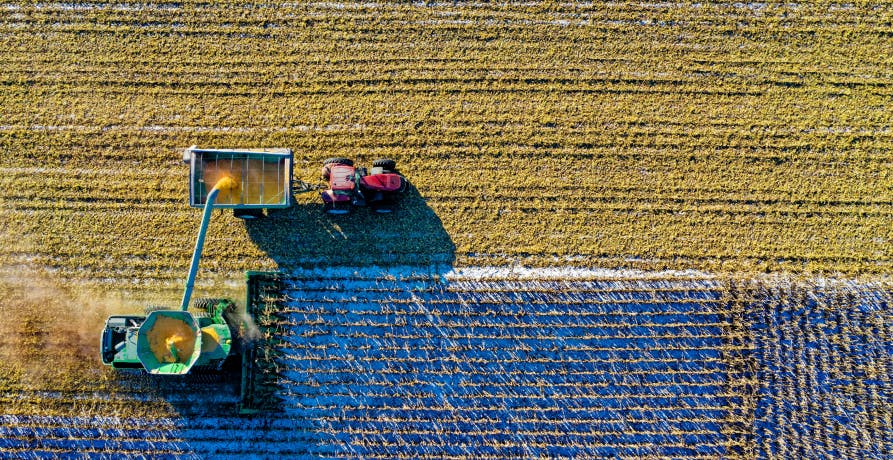ESG / CSR
Industries
Could CRISPR Technology Help Save Our Crops?



CRISPR gene editing technology has been making headlines around the world for the last few years. Based on a process first observed in the immune system of bacteria, the resulting technology allows scientists to accurately locate and replace sections of DNA.
Initially hailed as revolutionary for biomedical research and as potentially paving the way for the development of personalised treatments targeting genetic diseases that have so far been untreatable, the technology also has other unsung, yet highly promising applications. Most notably, the technology is being employed in the fight against climate change by helping to make crops and livestock more resistant to the impacts of global warming.
👉 In this article we’ll explore what CRISPR gene editing actually is and how it can be used to make our crops and livestock more resilient to climate change.
What is CRISPR technology?
We have bacteria and archaea to thank for the inspiration behind this exciting area of scientific research. CRISPR technology was adapted from the defence mechanisms of these simple microorganisms. Bacteria and archaea use CRISPR RNA and Cas proteins to prevent attacks by viruses. They do this by cutting up the DNA of the virus and then storing sections of the DNA in their own genome to protect itself against future viral attacks. The basic mechanism can be transferred to more complex organisms (plants, animals and humans) to manipulate genes - ie. gene editing.
So how does this technology work?
CRISPR works by precisely cutting DNA and then letting natural DNA repair processes take over. The method is controlled by two key components that introduce a change to the DNA:
- Cas9 is an enzyme that acts as a pair of ‘molecular scissors’, meaning that it is able to cut a strand of DNA in a targeted location so that sections of DNA can be added or removed.
- Guide RNA (a molecule related to DNA that acts as a messenger by carrying instructions from DNA for the synthesis of proteins) consisting of a small piece of purposely pre-designed guide sequence binds to the DNA, guiding the Cas9 enzyme to the correct part of the genome to ensure that the Cas9 enzyme cuts it at the right point.
Once the cut in the DNA sequence has been made by the Cas9 enzyme, the cell recognises that the DNA is damaged and tries to repair it. At this point it’s possible for scientists to introduce changes to the genes.

What are the potential uses of CRISPR technology?
CRISPR technology is perhaps most exciting due to its potential use in treating and preventing genetic diseases - CRISPR is on the cusp of revolutionising medicine as we know it. One day in the not so distant future it may be able to deliver personalised treatment plans that are able to target and treat a range of genetic diseases such as cancer, neurodegenerative diseases, blood disorders etc.
However, another extremely exciting, and world-changing application is the use of CRISPR technology in the fight against climate change. The first agricultural applications of CRISPR have recently been approved for use: a CRISPR edited tomato that offers increased nutritional value has been approved for sale in Japan, and the US Drug and Food Administration recently approved the edit of cattle genetics to enable them to tolerate higher temperatures.
Let’s take a look at how this new technology could become an important weapon in the fight against global warming.
CRISPR edited Agriculture
The global population continues to grow and is predicted to expand by a quarter within the next 30 years alone. However, the area of arable land available for use in agriculture is decreasing year on year. Unfortunately, Global warming is making the situation worse; with global temperatures rising our crops are under threat from drought, flooding, disease and pests. This means that the threat of food scarcity is becoming more and more likely. So how can CRISPR technology help prevent these threats?
Environmental resistance
CRISPR technology is being used to explore how crops can be made more resilient to the effects of climate change. Climate change makes periods of drought and intense rainfall more likely, these events represent a significant threat to our crops and can result in significant drops in crop yields. CRISPR technology has the potential to make plants more resistant to these types of threats which will help to prevent loss or damage and increase overall crop yields.
Pest resistance
Global warming is increasing the threat of insect pests in a number of ways. Changes in climate patterns can cause an expansion to their geographical distribution, increase their survival over winter months, increase their reproductive activity, and increase the threat of invasion by migratory pests. This presents a very real threat to our crops.
However, CRISPR technology may be able to prevent some of the worst effects, it can make plants more resistant to these pests by changing the genetic makeup of crops to make them more resilient to harm.

Improved crop longevity and nutritional value
Over 30% of food is lost to waste each year. This has a significant environmental impact; not only is the production of food a huge source of greenhouse gas emissions, it also represents wasted natural resources. It stands to reason therefore, that reducing food waste is an important component of the fight against climate change. CRISPR technology is already being deployed to help on this front.
CRISPR technology is being used to increase the shelf life of products across the board. For example tomatoes are being developed that are more resistant to bacterial disease, are larger in size, filled with more nutrients, and have better survival rates. Mushrooms are also being genetically edited using CRISPR technology to prolong their shelf life by delaying browning - tests show that browning activity can be reduced by as much as 30% using the CRISPR technique.
CRISPR research is also currently being used to engineer viruses that can target certain bacteria before they are able to infect crops. This is particularly useful for the citrus food industry which is at risk from diseases such as the ‘citrus greening disease’.
In fact, some of these CRISPR edited foods are already hitting our stores. Genetically modified apples that are resistant to browning are already being sold across the US, and more products are likely to follow suit.
Livestock editing
It’s not just crops that are being genetically modified using CRISPR technology to make them more resistant to the impacts of climate change, it’s actual livestock too. Increased temperatures are presenting a growing problem when it comes to the health of livestock. CRISPR gene editing however can allow small genetic changes to make animals more adept to living in these warmer conditions.
CRISPR gene editing can also be used to protect livestock from disease. Global warming is causing certain pathogens to spread more easily which can put livestock at significant risk from infection. CRISPR editing could provide protection from some of these pathogens.

How CRISPR technology can be used to reduce carbon emissions
CRISPR technology is not only being developed to protect our crops and livestock, research is also being conducted into how it can be used to reduce emissions from agricultural practices.
Agriculture accounts for 23% of global greenhouse gas emissions, and in a rapidly growing world this is set to increase. Therefore, if we’re going to have any chance of mitigating the effects of global warming and reaching net zero emissions, solutions to decarbonise the agricultural industry are going to have to be sought. CRISPR is already being researched as a potential way to help.
Reduction in agricultural emissions
A large portion of greenhouse gas emissions from agricultural processes are produced by microbes in the soil or in the guts of animals (cows are particularly notorious for releasing methane into the atmosphere). New research is focusing on ways to edit these gas producing microbes to reduce the amount of carbon they produce.
Another way that CRISPR can help is by improving the ability of plants and microbes to capture carbon dioxide and store it in the soil. Plants absorb CO2 as part of their energy production process anyway, but it is usually released back into the environment pretty quickly, CRISPR technology could potentially be used to increase the length of time that this carbon dioxide is stored.
Reduced reliance on fertilisers
Fertilisers are bad news for the environment, when they’re broken down by the microbes in the soil they release greenhouse gases directly into the atmosphere. Sadly they’re crucial to modern farming; without it the soil becomes quickly depleted in nutrients and crops are eventually unable to grow. CRISPR could offer a solution to this by editing staple crops such as rice and maize so that they are able to grow with less need for fertiliser.

Are there any safety issues with CRISPR?
CRISPR gene editing can sound complex and even scary - after all we’re talking about food that’s been genetically edited via techniques developed in a lab. So it’s only natural to wonder if it’s safe or if there could be any potential implication for human health. Thankfully, due to the highly specific editing abilities of this technology, scientists believe that the associated safety issues are minimal.
Unlike GMO crops, the CRISPR process doesn’t introduce any foreign DNA into the plant genome, it customises the genetic sequence by making highly targeted and specific changes to its DNA.
👀 Looking forward
CRISPR technology is an incredibly exciting scientific development that has the potential to not only advance medical treatments for traditionally untreatable and complex genetic diseases, but is something that may also play an important part in the fight against climate change by making crops and livestock more resistant and by reducing the amount of CO2 released into the environment.
What about Greenly?
At Greenly we can help you to assess your company’s carbon footprint, and then give you the tools you need to cut down on emissions. Why not request a free demo with one of our experts - no obligation or commitment required.
If you’d like to learn more about a specific industry, Greenly can help by providing an in-depth industry study, created by our climate scientists.



